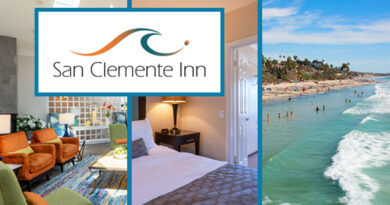Resort Tips for Battling Rising Costs of Inflation
Last year, inflation rates in the U.S. appeared to be a staggering 7%. Fast forward to this year, and June 2022 rates have risen to a 40-year high of 9.1% inflation year-over-year. Although there are signs that inflation is starting to ease somewhat due to declines in gas and energy costs, shelter and food costs continue to rise. July was slightly lower at 8.5% year-over-year inflation, and hopefully, that trend continues, but it makes it difficult for resorts to keep up with rising costs on somewhat fixed budgets. As we enter the last half of the year with the expectation that interest rates will continue to increase to curb inflationary pressures, there is still uncertainty and the need to take whatever measures possible to assist in curtailing costs for resorts.
The first line of defense to combat increasing costs is to increase prices. This works for rentals, food and beverage, and other service-type fees that have direct costs of occupancy and usage. However, this is a once-a-year opportunity for fixed budget items such as maintenance fees and the like and is not as fluid as other revenue streams. Boosting productivity and cutting costs is the only way for fixed budget-type items to combat the effects of inflation, which requires action. Boards and management must be proactive at this time and be prepared to make changes to ensure the sustainability of their resorts and minimize the impact of the current economic situation.
Related: Resort Timeshare Budgeting Tips
Measures to Take
There is no “one size fits all” approach to cutting costs as each resort is unique and has its own operational challenges. The following are some general ideas to consider that can help combat the effects of rising costs.
Accountability and Visibility
Spending visibility allows management to see and understand where funds are spent and for what purpose. This visibility allows a spending analysis by cost, vendor, function, etc., and fuels accountability and the ability for collaboration to find solutions for cost reductions. This visibility can also assist with determining how spending aligns with strategy.
Establish Formal Vendor Programs
Establishing a formal preferred vendor program can increase purchasing power and possibly facilitate something closer to just-in-time inventory purchasing, which in higher cost times could allow some hedge against rising prices. Also, it increases purchasing visibility, as discussed above, to help ensure spending aligns with strategy. It is important, however, to make sure the vendor list is diversified so that competitive advantages can be obtained.
Align with Strategy
Often, cost cutting is done as a reaction without considering the longer-term strategy in place. Be cautious when making spending cuts so that they don’t jeopardize the long-term goals of the resort. There are places where perhaps cutting costs does not have any material effect on operations, and other places where severe cost cutting can have damaging effects on the owner and guest experience.
Determine Where Consumption can be Reduced
For most resorts, payroll alone is 30% to 40% of expenses. Determining ways to increase productivity can have big results on employee costs as long as owner and guest satisfaction stays at the core of decision-making. Also, evaluate if there are tasks that can be eliminated altogether or services that can be performed less often with no critical impact. Take a hard look at what tasks are performed, how often they are performed, and how they are performed to help identify where some cost savings might be available.
Innovation and Automation
Consider implementing an innovation reward program. Ask employees to identify areas where they believe process or cost savings can be achieved for repetitive tasks or cumbersome reporting, for example. The low-hanging fruit of this exercise is tasks that could be easily automated to save time and money. Ideas implanted that generate cost savings earn a reward of some type or the originator of the idea, which would be insignificant to the resort in comparison to the cost savings to be achieved.
Related: Attract and Retain Employees
Evaluate Programs and Offerings
It is time to take a look at the lines of business and offerings to owners and guests to determine if any items cost more than the value they provide. Food and beverage offerings can be streamlined to focus on those items that are more popular and generate more profit. Activities can be centered around lower-cost programs with possibly less frequency. Charges for these services could be increased to ensure that they are not operating at a loss.
Related: Inflation Busters: Protecting Profits as Costs Rise
In times of economic uncertainty, Boards and management must be engaged and involved in the strategy for reducing costs so that resorts can continue to thrive. The goal is to implement measures that cut costs or recover more revenue without negatively impacting owner and guest satisfaction and to be nimble to make changes to the plan as necessary through constant review and reevaluation. Also, it is important in the budgeting process to adequately raise maintenance fees to cover the rising costs of operations. The answer will differ for each resort, but with good communication, visibility, planning, and timely execution, the impacts will be felt quickly and will be significant.
ABOUT WITHUM
Withum is a forward-thinking, technology-driven advisory and accounting firm, committed to helping clients in the hospitality industry be more profitable, efficient, and productive in the modern business landscape. For further information about Withum and its cybersecurity, digital advisory, and hospitality services teams, contact Lena Combs (LCombs@Withum.com) at (407) 849-1569, or visit www.withum.com.



